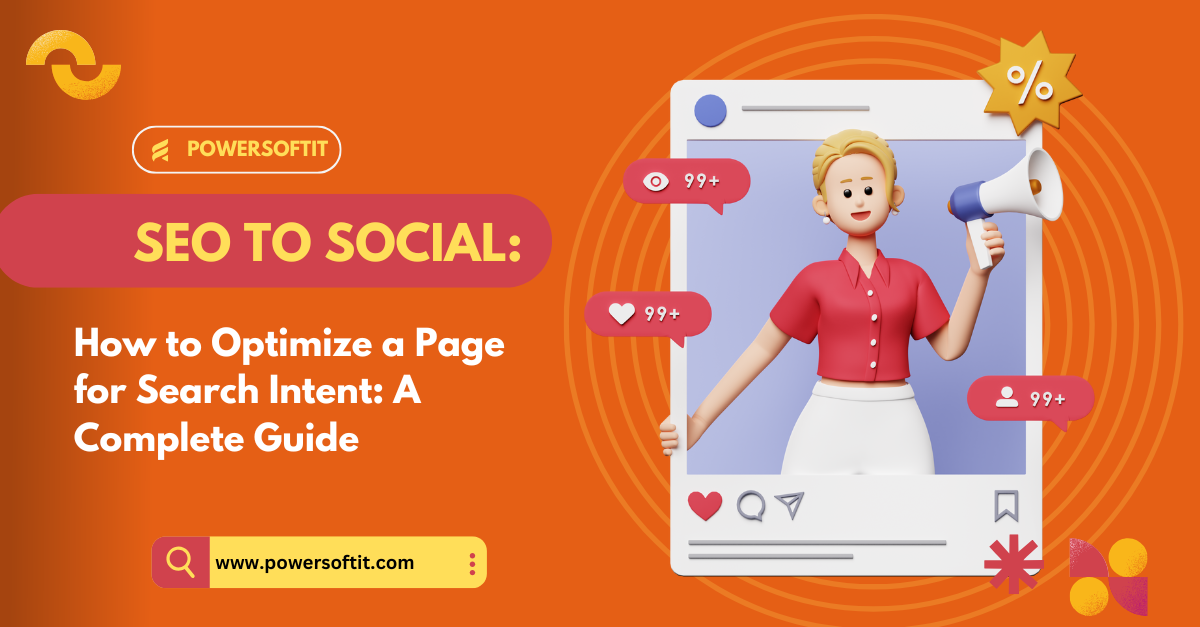How to Optimize a Page for Search Intent: A Complete Guide

Search intent, also known as user intent, refers to the reason behind a person’s search query on search engines like Google,Bing,Yahoo e.t.c. Understanding search intent helps optimize content to meet users' needs and improve SEO rankings.
Optimize a Page for Search Intent: We have to follow some steps to Optimize a Page for Search Intent. They are given below:
1. Identify the Search Intent Type
Determine which of the four types your page aligns with:
🔹 Informational – Blog posts, guides, tutorials (e.g., “What is ASP.NET MVC Core?”)
🔹 Navigational – Brand-specific pages (e.g., “Microsoft ASP.NET documentation”)
🔹 Transactional – Sales or sign-up pages (e.g., “Buy ASP.NET MVC Core course online”)
🔹 Commercial Investigation – Comparisons, reviews (e.g., “Best ASP.NET MVC Core training courses compared”)
2. Optimize Page Content for Intent
✔ Use Keywords Naturally – Place primary & related keywords strategically in the title, headings (H1, H2), meta description, and throughout the content.
✔ Create Relevant Content – Ensure the content directly answers the user’s query (e.g., transactional intent should include pricing, sign-ups, and CTA buttons).
✔ Format for Readability – Use bullet points, subheadings, and short paragraphs for easy scanning.
3. Improve Meta Tags & URL Structure
🔹 Title Tag – Include the target keyword + value proposition (e.g., “Best ASP.NET MVC Core Course for Beginners – Enroll Today”)
🔹 Meta Description – Summarize the content in 160 characters with keywords (e.g., “Learn ASP.NET MVC Core with expert instructors. Sign up today!”)
🔹 SEO-friendly URL – Keep it short and relevant (e.g., example.com/asp-net-core-course)
4. Optimize for User Experience (UX)
✔ Fast Page Load Speed – Compress images, use a CDN, and minimize code bloat.
✔ Mobile-Friendliness – Ensure the page looks good on all devices.
✔ Clear CTA (Call-to-Action) – Use buttons like “Enroll Now” for transactional pages or “Learn More” for informational pages.
5. Leverage Internal & External Links
✔ Internal Links – Connect relevant pages (e.g., linking an ASP.NET MVC Core course page to related blog posts).
✔ External Links – Link to trusted sources (e.g., Microsoft ASP.NET documentation) to boost credibility.
6. Monitor & Refine Performance
🔹 Use Google Search Console to track ranking improvements.
🔹 Analyze click-through rates (CTR) with Google Analytics.
🔹 Adjust keywords and headings if bounce rates are high.
Example Optimization for "ASP.NET MVC CORE Course" (Transactional Intent)
✅ Title: “Learn ASP.NET MVC Core – Enroll in Our Comprehensive Course Today”
✅ Meta Description: “Master ASP.NET MVC Core with industry experts. Flexible learning, practical projects. Sign up now!”
✅ Call-to-Action: “Start Learning” (button)
#ASPNETCore #WebDevelopment #LearnCoding #OnlineCourse #SEO #DigitalMarketing
Back to Blogs
